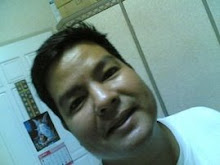Koi enthusiasts never take their pond water for granted. Just count the number of articles on the web discussing how to keep your water clean enough for your koi. There are literally hundreds of them. Now add one more to the list -> this article. I guess a koi website won't be complete without one.
Water quality, as said many times before and to which we all agree, is the most important factor in the pond that affects koi health (and happiness). The question, therefore, is not on the importance of diligently keeping our pond water clean, but on how well we know if we're meeting the requirements. Unless we have a way of measuring the cleanliness of our pond water, we can not really claim that we have good water, regardless of how frequently the mats are cleaned or how clear the water is. Water testing kits, which are now widely available in the market, should therefore be part of any koi hobbyist's toolbox.
Koi experts agree that water is good enough for your koi if: 1) it is free of chlorine and other chemicals such as pesticides, heavy metals, organophosphates, etc.; 2) it has undetectable levels of ammonia and nitrite; 3) its hardness, pH level, and temperature are correct; 4) it has low levels of dissolved organic compounds (DOC) and particulate organic compounds (POC); and 5) it is stable in its quality.
for different water quality parameters
Ammonia (NH3) is the next deadliest contaminant in pond water, next only to chlorine. One part per million is already detrimental to the fish. The main source of ammonia, unfortunately, can not be removed from the pond. This is because ammonia in the pond comes primarily from the koi themselves. Ammonia will therefore always be present in the pond as long as there are koi (or other fishes and animals) living in it. The good news is that ammonia is easily converted to less harmful compounds by certain types of bacteria (nitrosomonas) through biological filtration.
The threat of ammonia contamination poses the highest risk while the pond is still new. This is because new ponds still lack the colony of 'good' bacteria needed to convert ammonia into less harmful compounds. Koi experts recommend daily checking of ammonia levels and daily 50% water changes in new ponds until ammonia readings stabilize. The threat of ammonia in new ponds is so serious that there's even a name for this phenomenon - the 'New Pond Syndrome', or NPS.
.jpg)





No comments:
Post a Comment